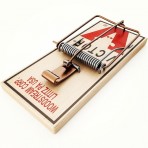Twitter Summary: Money ruins the intrinsic value of creative work. It shifts your focus from the reward creative work offers and attaches it to money.
Principle
In Dan Pink’s book Drive he starts by presenting a bedrock assumption that most of the world follows: “The way to improve performance, increase productivity, and encourage excellence is to reward the good and punish the bad.” Pink explains that for as long as we can remember, we’ve configured our organizations and constructed our lives around this assumption.
This explains why most organizations offer financial incentives to high performers or higher salaries for positions with significant responsibility. If you want performance, you have to pay for it. But Pink says this is a problem. Pink explains that this is a problem because the majority of jobs no longer crank our widgets, but do creative work. The glory days of the industrial revolution are gone and the economy of our world is now based on creative work. Financial rewards for increased quantity or quality of a widget makes sense, but the economy of this world no longer focuses on a manufacturing model. In a way, he’s drawing your attention to the final chapter of the industrial revolution.
Today, a large percentage of the work being done is more creativity than assembly line. Most people in these jobs find intrinsic value in the job itself – they find a great sense of accomplishment in the work regardless of the financial rewards. That’s why we see high numbers of people leaving great paying careers to take jobs that offer a greater sense of purpose.
So how does money do more harm than good in this case? Here’s what Pink has to say.
“Rewards can deliver a short-term boost – just as a jolt of caffeine can keep you cranking for a few more hours. But the effect wears off – and, worse can reduce a person’s longer-term motivation to continue the project.”
Too man organizations…”continue to pursue practices such as short-term incentive plans and pay-for-performance schemes in the face of mounting evidence that such measures usually don’t work and often do harm.”
“…adding certain kinds of extrinsic rewards on top of inherently interesting tasks can often dampen motivation and diminish performance.”
“The best use of money as a motivator is to pay people enough to take the issue of money off the table.”
“Adding a monetary incentive didn’t lead to more of the desired behavior. It led to less. The reason: It tainted an altruistic act and ‘crowded out’ the intrinsic desire to do something good.”
So how does money do more harm than good? In a creative environment, money ruins the intrinsic value of creative work. It shifts your focus from the reward creative work offers and places it on a financial goal, which reduces the quality of the work. That’s how money does more harm than good in the work place today.
Money Does More Harm Than Good and Making Connections
In June 2012 I packed up my little family in Hawaii and moved us across the Pacific Ocean and Continental U.S. to Maryland. Hawaii had been my home for 26 years and the only home my little family had ever known. I had a great job, lived in a beautiful place, played music regularly, so what was not to love?
 In October 2011 we had our third child and were still living in a one bedroom apartment. The kids had the bedroom and the wife and I were sleeping in the living room with the baby. Needless to say, it was getting a little cramped. You can see our bed in the background of the photo to your right. And even though I had a great job, it just wasn’t paying enough so we could live without feeling so cramped.
In October 2011 we had our third child and were still living in a one bedroom apartment. The kids had the bedroom and the wife and I were sleeping in the living room with the baby. Needless to say, it was getting a little cramped. You can see our bed in the background of the photo to your right. And even though I had a great job, it just wasn’t paying enough so we could live without feeling so cramped.
So one of the reasons we decided to move had to do with our inability to afford housing we felt met our needs. I remember speaking with a supervisor at the time and explained the pressure I felt to provide a less stressful living situation for my wife and kids and my situation surprised him, but there was nothing he could do.
At that time, money was such an issue that I couldn’t focus 100% on my job. I was in the exact opposite situation Pink explained, “pay people enough to take the issue of money off the table.” At that time, it was absolutely on the table for me and was one of multiple reasons we moved.
My situation proves the point made by Australian Mike Cannon-Brookes in Drive when he said, “If you don’t pay enough, you can lose people. But beyond that, money is not a motivator.” My situation has changed since we’ve moved and now I can focus 100% of my energies on my job because those previous stressors are gone.
So What?
So consider your situation if you are an employee. Are you struggling to give the best you have to offer because you’re so concerned about your financial needs? If you’re not giving your best in a creative environment, seriously consider alternatives because they are out there. What do you think those could be?
As an employer, consider focusing less on bonuses or pay-for-performance incentives and simply pay sufficient to meet needs. I know that “needs” are relative, but that’s not a hard number to figure out realistically.
But more importantly, once money is off the table, the real work can finally begin and that starts by providing people with autonomy.
Next Weeks Post: I’ll walk you through the first real motivator in a creative work environment, autonomy. Pink associates autonomy with the 4 Ts: time, task, technique, and team.







This has been true for me when I make cards. If I feel pressure to do it as a business, it’s hard to motivate myself to work on it, even though I know there will be a financial payoff if I force myself to do it. But if I’m just exploring my own creative ideas and interests, I love doing it, and can go on and on and on without tiring of it, and the resulting product is much better. True principle!
Angela, you’re so smart! 😉 Yours is a perfect example.